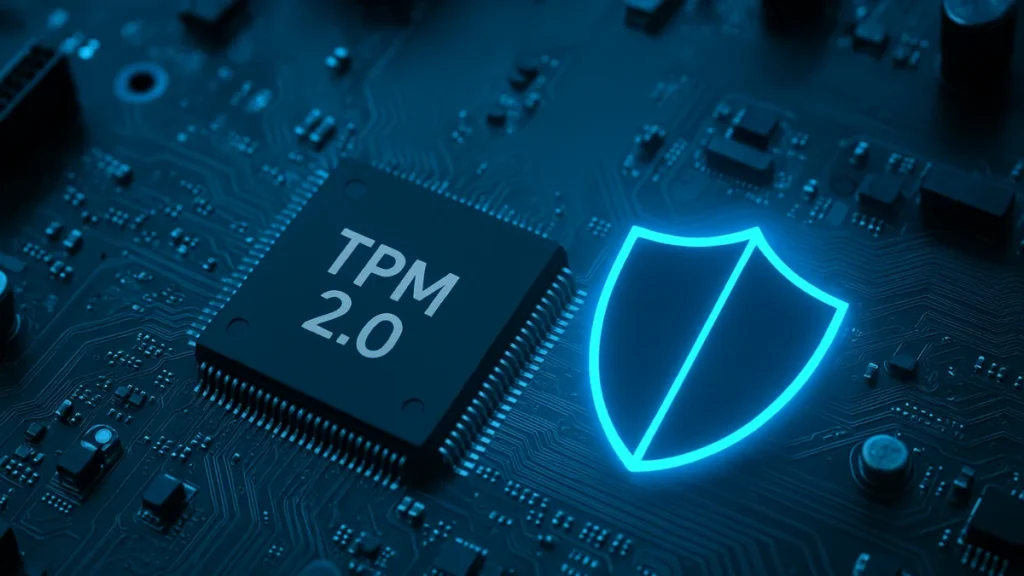If you want to enable TPM 2.0 and Secure Boot for gaming, especially for upcoming titles like Call of Duty: Black Ops 7, now is the time to act. These hardware-level security features are becoming essential for competitive multiplayer games that rely on anti-cheat systems like Ricochet. Without them, you may be locked out of modern titles entirely.

What Are TPM 2.0 and Secure Boot in Gaming PCs?
Trusted Platform Module (TPM) 2.0 is a hardware-based security chip that stores cryptographic keys and ensures your system hasn’t been tampered with. Secure Boot, on the other hand, checks that your PC starts using only software trusted by the manufacturer. Together, they create a hardened environment that prevents cheat loaders, rootkits, and unsigned drivers from interfering with gameplay.
See also: Will Your PC Run Black Ops 7? TPM 2.0 and Secure Boot Decide
More games are adopting these requirements as developers push for stronger, hardware-based anti-cheat protections.
Why Gamers Must Enable TPM 2.0 and Secure Boot for Modern Gaming
Games like COD: Black Ops 7, Valorant, and others are enforcing these security settings to strengthen anti-cheat protection. Without them:
- You may receive errors or be blocked from launching the game.
- Anti-cheat software may consider your system vulnerable.
- You may lose compatibility with future patches or system updates.
That’s why enabling TPM 2.0 and Secure Boot is not just a technical step — it’s part of being gaming-ready in 2025 and beyond.
Check If TPM 2.0 Is Enabled on Your Gaming PC
Start by checking if TPM 2.0 is already available and active on your system:
- Press
Windows + R, typetpm.msc, and press Enter. - Look for “TPM Manufacturer Information.”
- If it says “TPM is ready for use” and version is 2.0 — you’re good.
If TPM is missing or disabled, you’ll need to access BIOS/UEFI to activate it.
Verify Secure Boot Is Enabled Before You Game
To check Secure Boot status:
- Press
Windows + R, typemsinfo32, and press Enter. - In the System Summary, find “Secure Boot State.”
- If it says “On,” then Secure Boot is already enabled.
If it says “Off” or “Unsupported,” you’ll need to configure it through BIOS.
Enable TPM 2.0 and Secure Boot via BIOS/UEFI Settings
Before diving into BIOS settings, make sure:
- You know your motherboard model
- You’ve backed up important data
- You’re comfortable making system-level changes
To enable TPM 2.0:
- Reboot your PC and enter BIOS (usually via F2, DEL, or ESC).
- Navigate to the Security or Advanced tab.
- Find and enable TPM, PTT (Intel), or fTPM (AMD).
To enable Secure Boot:
- In BIOS, go to the Boot tab.
- Ensure Boot Mode is set to UEFI, not Legacy.
- Locate Secure Boot and set it to Enabled.
Note: If you don’t see Secure Boot, it may be hidden until your disk is converted to GPT.
Convert Your System Drive to GPT for Secure Boot Support
Secure Boot requires your boot drive to use GPT (GUID Partition Table) instead of the older MBR format. Here’s how to check:
- Press
Windows + X→ Disk Management. - Right-click your system disk → Properties → Volumes.
- Look for “Partition Style” — it should say GUID Partition Table (GPT).
If it says MBR, you’ll need to convert it using the MBR2GPT tool (safe for Windows 10/11):
mbr2gpt /validate /allowFullOS
mbr2gpt /convert /allowFullOSThen reboot into BIOS and switch boot mode from Legacy to UEFI.
Finalize Settings and Reboot Into a Secure Gaming Environment
Once everything is configured:
- Save BIOS changes
- Exit and reboot
- Your PC should now be UEFI-booted with TPM 2.0 and Secure Boot active
You’re now ready for games that require hardware-level anti-cheat protection.
Tips to Enable TPM 2.0 and Secure Boot Without Issues
- Always back up important files before touching BIOS.
- Update your BIOS firmware if Secure Boot options are missing.
- If using a custom-built PC, ensure your CPU and motherboard support TPM 2.0.
- For AMD CPUs, look for fTPM under AMD CBS settings.
- Some prebuilt PCs ship with TPM disabled by default — check your manual.
With TPM 2.0 and Secure Boot now being required by some of the biggest multiplayer games, enabling them is a smart move — not just for Call of Duty, but for any upcoming titles using robust anti-cheat solutions.
Once enabled, these features have no performance impact on your games — just a more secure, fairer playing field for all.

